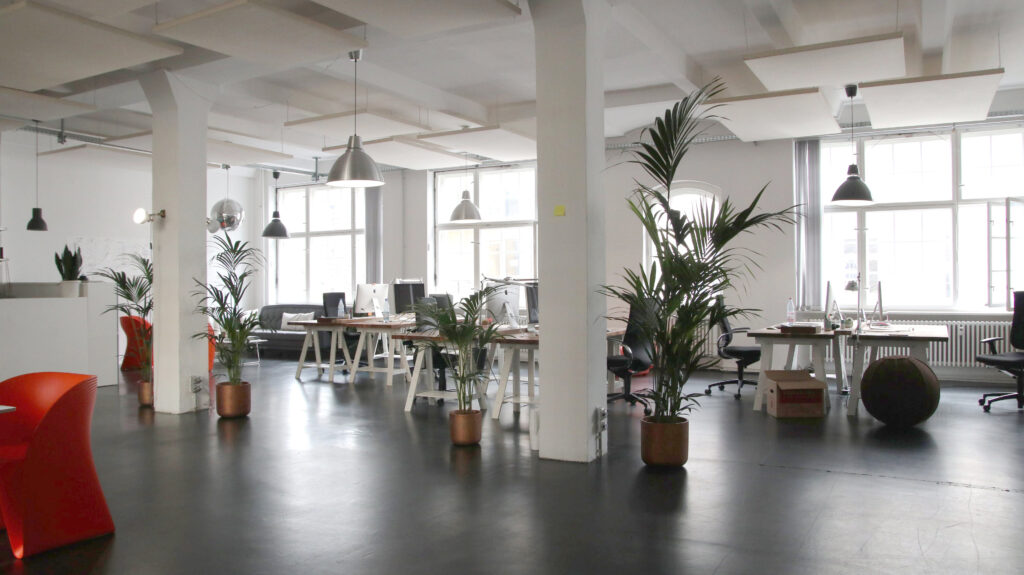Planning an office refurbishment in London is a complex process that requires careful consideration of various factors, from budget allocation and design selection to material sustainability and post-refurbishment care. This blog post will guide you through each stage of the refurbishment process, ensuring that you create a functional, aesthetically pleasing, and environmentally friendly workspace that meets your business needs and enhances employee productivity.
Setting a budget: making the most of your finances.
Embarking on an office refurbishment project in London demands careful financial planning to ensure your vision aligns with your budget. Establishing a realistic budget is the cornerstone of your refurbishment journey, guiding every decision. Begin by determining the total amount you will invest in the project. This figure will act as a compass, directing your choices and ensuring you stay on track. Prioritizing your needs is paramount in budget allocation. Identify the essential aspects of the refurbishment that directly contribute to achieving your business goals. Allocate funds strategically to these priority areas, ensuring they receive the necessary resources to deliver the desired impact. While it may be tempting to spread your budget evenly across all aspects of the refurbishment, focusing on critical priorities will yield more significant results. Seeking professional advice from an interior designer or architect can prove invaluable in optimizing your budget. These experts have the knowledge and experience to guide you toward cost-effective solutions and materials aligning with your vision. Their insights can help you make informed decisions, ensuring you get the most value for your investment.
Choosing the right design: creating a functional and aesthetic space.
Choosing the right design for your office refurbishment is essential to creating a functional, aesthetic space that supports your team’s needs. This section will discuss the key factors, including functionality, aesthetics, flexibility, ergonomics, and lighting. When considering functionality, consider how your team works and what they need to be productive. Do they need private offices, collaborative spaces, or a mix of both? Ensure there is enough space for everyone to work comfortably and that the layout promotes efficient workflows. Aesthetics are also important, as they can impact employee morale and productivity. Choose a design that is visually appealing and reflects your company’s culture. Consider the colors, materials, and finishes to create the desired atmosphere. Flexibility is critical in today’s rapidly changing business environment. Your office should be able to adapt to new technologies and working methods. Choose furniture and layouts that can be easily reconfigured, and ensure plenty of power outlets and data ports. Ergonomics is essential for employee health and well-being. Ensure the furniture and equipment are designed to promote good posture and reduce the risk of repetitive strain injuries.
.
Selecting sustainable materials: minimizing environmental impact.
Selecting sustainable materials for your office refurbishment in London can significantly reduce the environmental impact of your project. Here are some key considerations to keep in mind:
Recycled or upcycled materials Opt for materials that have been reclaimed, recycled, or upcycled whenever possible. This reduces the demand for new materials and diverts waste from landfills. Many eco-friendly manufacturers offer high-quality recycled or upcycled materials, including furniture, flooring, and wall coverings.
Low embodied carbon emissions Embodied carbon refers to the greenhouse gas emissions associated with building materials’ extraction, production, and transportation. To minimize your project’s carbon impact, choose materials with a low embodied carbon footprint. Look for materials made from renewable resources, such as bamboo or cork, or materials produced using energy-efficient processes.
Durability and longevity: Select durable, long-lasting, easy-to-maintain, and clean materials. This will reduce the need for frequent replacements and renovations, saving you money and resources in the long run. Consider materials resistant to wear and tear, such as solid wood or high-quality laminate flooring.
Managing the refurbishment: ensuring a smooth transition
Once you have chosen a design and finalized your budget, the next step is to manage the refurbishment process to ensure a smooth transition. This involves developing a detailed timeline, communicating regularly with stakeholders, setting up regular progress meetings, and implementing a contingency plan. Creating a comprehensive timeline is crucial for keeping the project on track. This should include key milestones, such as the start and end dates of each phase of the refurbishment, as well as deadlines for material deliveries and installations. It is essential to be realistic about the time required for each task and to factor in potential delays. Maintaining open lines of communication with all stakeholders is critical to the project’s success. This includes the project team, contractors, employees, and others affected by the refurbishment. Regular updates on the project’s progress help ensure that everyone is on the same page and that any issues are promptly addressed.
Post-refurbishment care: keeping your office looking its best
After the refurbishment is complete, it’s crucial to prioritize the ongoing care and maintenance of your office space to preserve its aesthetics and functionality. Careful handling of furniture and equipment is essential to prevent damage and prolong their lifespan. Spills and accidents should be attended to to avoid staining or surface damage immediately. Regular monitoring of wear and tear, especially in high-traffic areas, allows for timely repairs or replacements. Updating and refreshing the décor periodically can keep the office environment vibrant and inspiring. This could involve rearranging furniture, adding new plants, or incorporating fresh color schemes. By implementing these post-refurbishment care measures, you can ensure that your office looks its best and provides a conducive environment for your team’s success.
conclusion
A well-planned office refurbishment can transform your workspace into a space that inspires creativity, boosts productivity, and fosters a positive company culture. By setting a realistic budget, choosing the right design, selecting sustainable materials, and managing the refurbishment process efficiently, you can create an environment that meets the needs of your team and aligns with your company’s goals. Remember that ongoing care and maintenance are crucial to preserving the aesthetics and functionality of your refurbished office. Regular cleaning, inspections, and prompt attention to any issues will ensure that your investment continues to pay off in the long run. Don’t hesitate to take the first step towards planning your office refurbishment in London and experience the positive impact it can have on your team and your business.
Stay tuned for more news and updates on Infinite Insight Hub!



